Plant Health Promoters SA and JA and Their Fit in Modern Ag
Jasmonic and salicylic acids (JA and SA) are plant phytohormones that play key roles in resistance/tolerance to biotic and abiotic stresses and interact with the other families of phytohormones to modulate growth and development. Understanding these PGRs and their roles has given modern agriculture new tools to fight diseases and pests, reduce the build-up of resistance to fungicidal and insecticidal active ingredients and enhance crop tolerance to a wide range of abiotic stresses, such as wet, dry, cold and hot.
JA and SA: Naturally-occurring Signaling Phytohormones
Produced by all plants, JA and SA are naturally occurring phytohormones derived from jasmin and weeping willow (Figure 1). Known as signaling phytohormones, they control pathways that allow plants to trigger defense responses against pathogens and pests and activate mechanisms of tolerance to abiotic stress.
They are also involved in many processes of growth and development, such as nodulation, and interact with the other families of phytohormones, such as auxins, cytokinins, gibberellins, ethylene and abscisic acid, to modulate the plant’s growth habits and patterns.
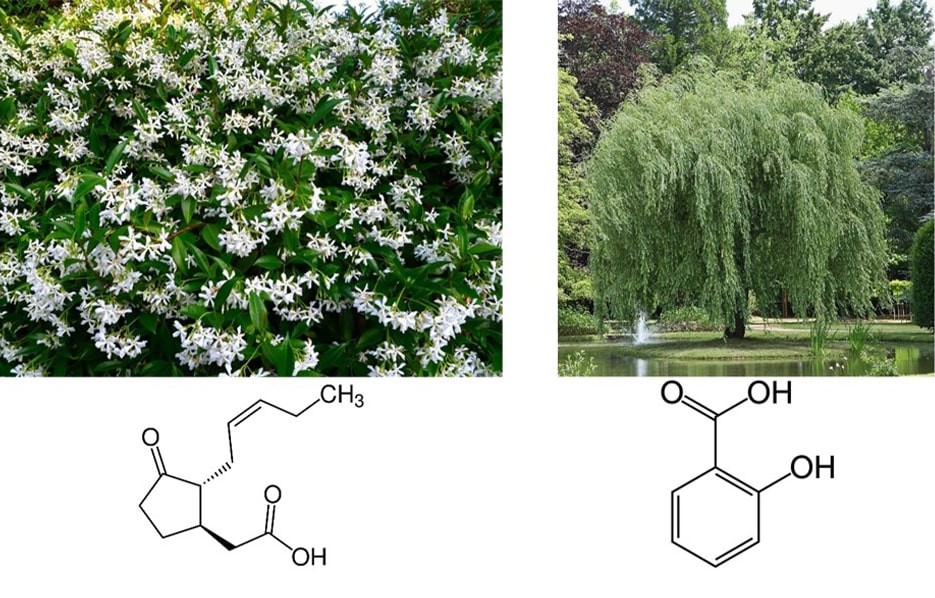
Figure 1. Jasmin (source of JA) on the left and weeping willow (source of SA) on the right in their natural habitat.
Jasmonic Acid: The Long-range Signal
Unlike animals, plants are immobile but do have the capacity to send warning signals from one part of the plant to another, or even from one plant to another through gaseous cues and molecules (Figure 2). JA and SA are two of the main messengers and signals that are triggered by plants in periods of abiotic or biotic stress.
As a naturally-produced growth regulator, JA is involved in many plant processes, including: growth and development; photosynthesis; seed germination; root and shoot growth; the nodulation process as it controls flavonoids biosynthesis; tuberization in potatoes; trichome formation in tomatoes; tendril coiling in peas; flowering; fruit development; leaf abscission and senescence. (We will be addressing senescence in a future blog post).
JA also controls defense responses against pests and pathogens, as it is the signal molecule of the Induced Systemic Resistance (ISR) that allows plants to trigger their natural immunity against intruders (Figure 3). Jasmonate (the gaseous form of JA) is also used by plants as a long-range signal to warn neighbouring plants to prepare for upcoming infection or infestation.
JA is very effective at triggering a defense response against necrotrophs (e.g. Fusarium, Rhizoctonia, Tan Spot, Blackleg and Alternaria). Application of JA in very low doses prior to the spread of disease or in combination with mono-site fungicides (e.g. Strobilurins) can lead to a significant reduction in disease pressure. This is preventative, not curative, and the timing of the application is crucial for insuring a beneficial effect. It’s important to note that JA does not replace the application of pesticides but, rather, has the ability to enhance and prolong their effect in controlling diseases and pests.
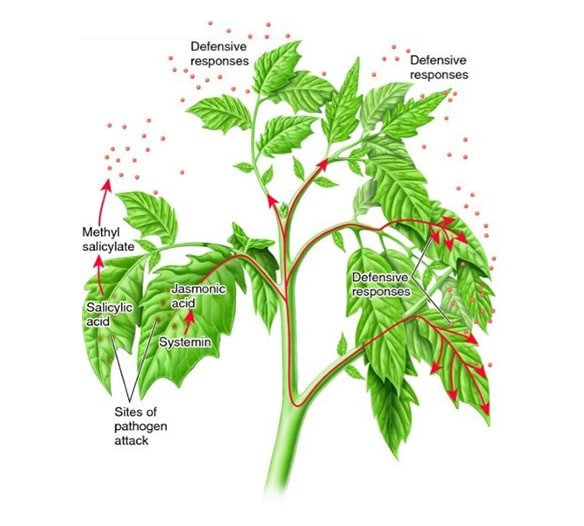
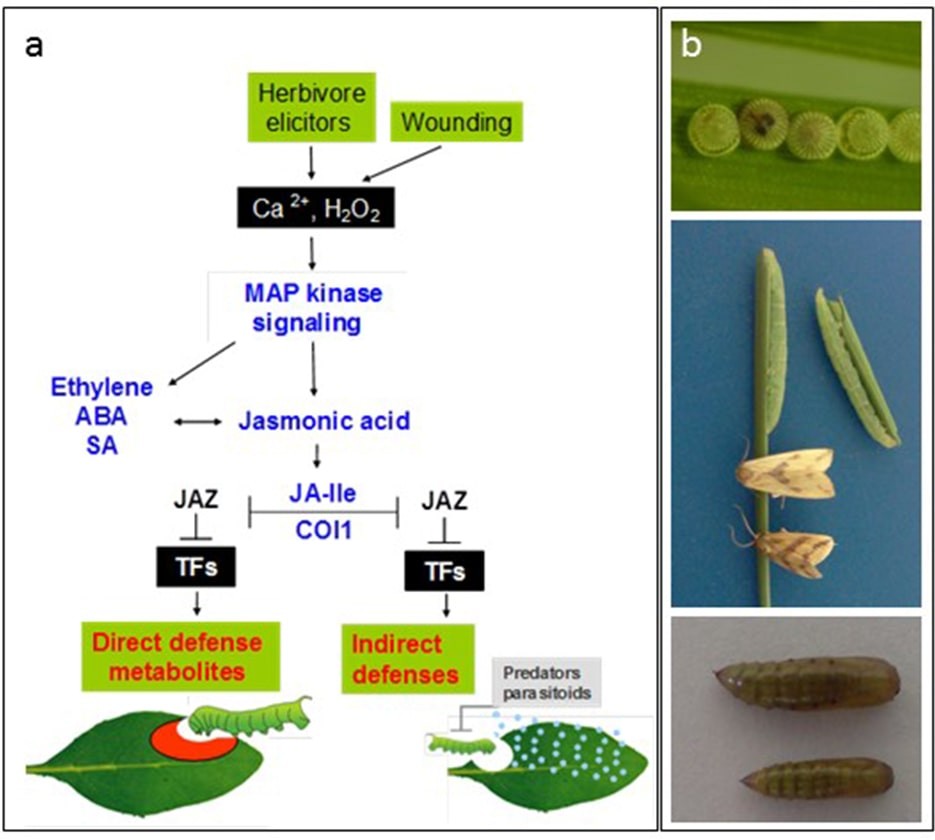

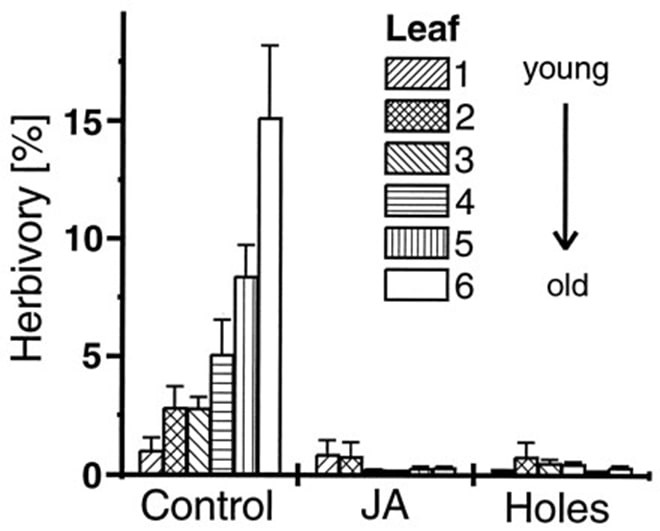
Salicylic Acid: The Signaling Phytohormone Against Biotrophs
SA regulates several processes of a crop’s growth and development: photosynthesis, transpiration, ion uptake and transport, and defense responses against pathogens. SA regulates processes spanning from seed germination to nodulation, stomatal opening and thermoregulation, to respiration and immune responses (Figure 4). As well, SA improves resistance to environmental stressors including drought, temperature and salinity, and enhances flowering and fruit sets.
When crop protection products are applied together with SA, SA triggers the plant’s natural defense responses and helps prevent the build-up of resistance towards the product’s active ingredients. SA also modulates plant interactions with all three types of trophic pathogens – biotrophs, necrotrophs and hemibiotrophs. (Read our blog post on brassinosteroids for more information.)
Typically produced in the infected parts of the plant, SA is translocated systemically to alert the healthy parts. This process is called the Systemic Acquired Resistance (SAR). Applications of very low levels of SA prior to the disease spread, or in combination with mono-site fungicides (e.g. Strobilurins), can lead to a significant reduction in disease pressure (Figure 5). However, if the disease is already present on the crop, application of SA does not act as a replacement for fungicides.
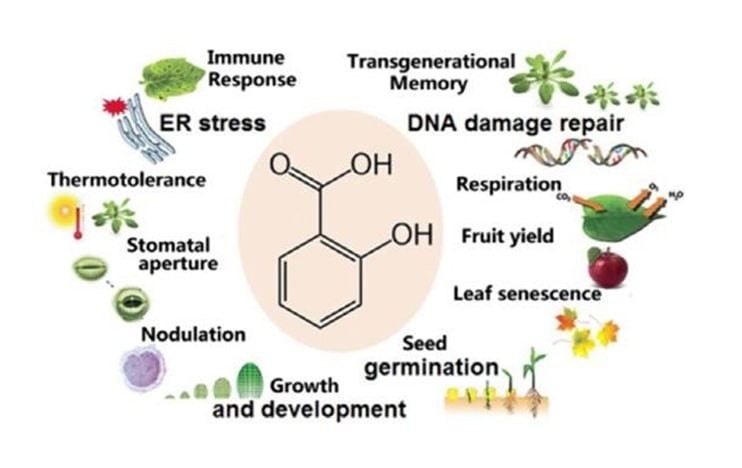
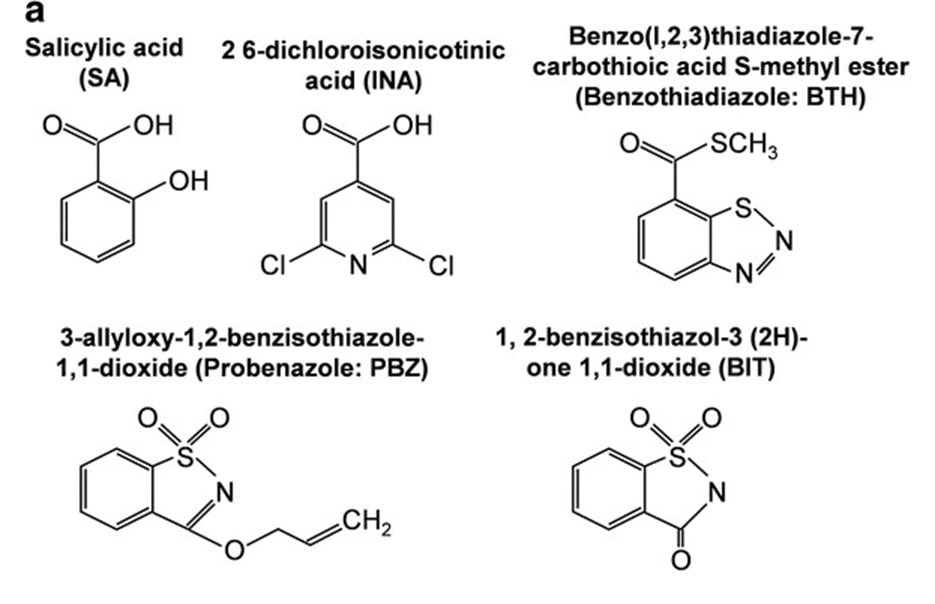
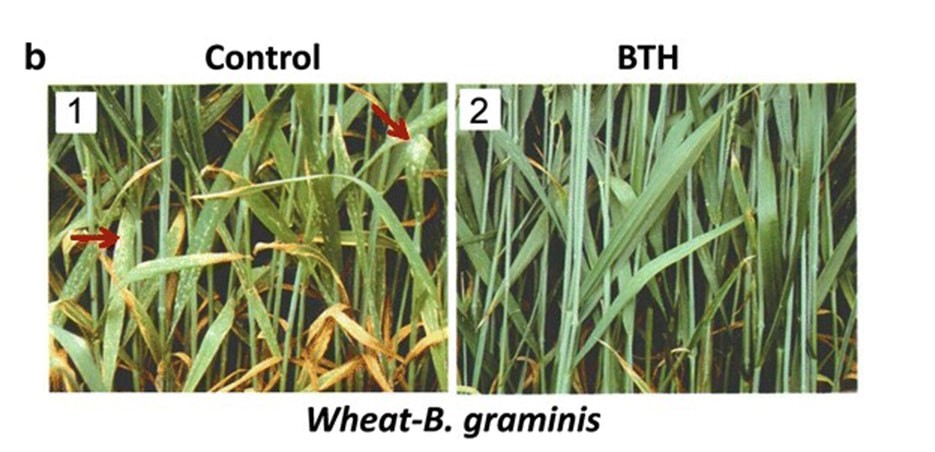
OMEX Can Help
OMEX offers a wide range of Primers, Starters, Foliars, PGRs, Biologicals and Biostimulants that can be used to prevent or correct deficiencies and promote soil and crop health, helping to optimize growth and development of crops in ideal and less-than-ideal conditions. Standalone SA and JA and a range of products formulated with these PGRs are also available to address stress conditions in various crops.
Talk to your local ag retailer or contact your OMEX representative to learn more about how a plant and soil nutrition program that includes OMEX products, including SA and JA, can preserve the yield and quality of your crops, helping you grow the best crop possible.
